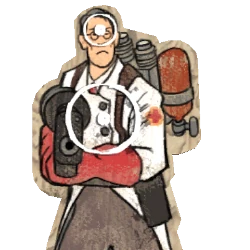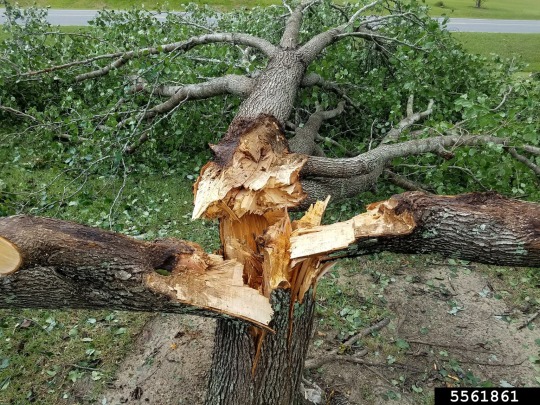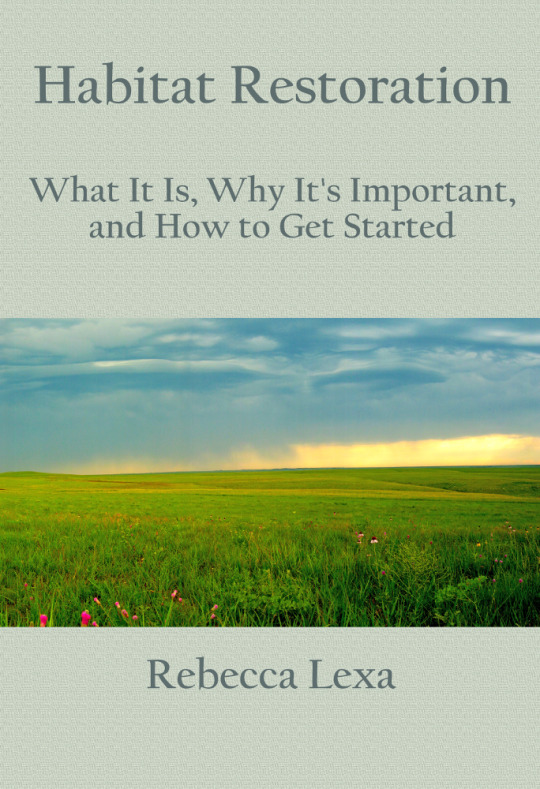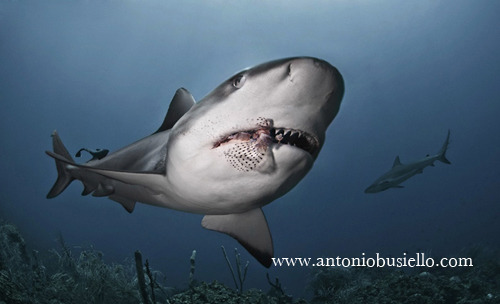#invasive species
Text
"Two wild kiwi chicks were born near Wellington, New Zealand, about a year after a reintroduction program began in the city, the Capital Kiwi Project announced last week. The fluffy, brown babies are the first to be born near the country’s capital in at least 150 years.
“This is very special for the team, which has been working hard for the last few years,” project founder Paul Ward tells the Agence France-Presse. The chicks are a “massive milestone for our goal of building a wild population of kiwi on Wellington’s back doorstep.”
These flightless, chicken-sized birds were once abundant across New Zealand, with the nation’s five species numbering an estimated 12 million individuals in total. But nonnative predators and habitat loss caused their populations to plummet. Today, approximately 68,000 kiwis remain....
Conservation and reintroduction programs, including the Capital Kiwi Project, have been working to restore a large-scale wild kiwi population for years. In 2022, the organization released 11 kiwis into the wild in Makara, a suburb about seven miles west of Wellington. Between February and May of 2023, another 52 birds were released, and 200 more are slated to be released over the next five years, reports Eva Corlett for the Guardian.
Along with reintroduction efforts, the project aimed to reduce threats from European stoats, also known as ermines. The mammals were brought to New Zealand in the 19th century in an attempt to eradicate another introduced creature: rabbits. But these weasel-like stoats are voracious predators and kill many of New Zealand’s native species, including kiwi chicks. Only about 5 percent of kiwi chicks survive to reach breeding age in areas where predators are not controlled, largely thanks to stoats. In areas under management, however, 50 to 60 percent survive. Knowing this, conservationists worked with 100 landowners across the bird’s 60,000-acre habitat to install 4,600 stoat traps.
Of the 63 adult kiwis now roaming the hilly farmlands of Makara, only about a quarter are being monitored—meaning more chicks will likely hatch in the near future. Conservationists will continue monitoring the two new chicks, though Ward tells the Guardian they still have a long way to go before they’re fully grown...
Over the years, the long-beaked birds have become a national symbol of New Zealand, with people who hail from the country often referred to as kiwis. The animals also hold special importance to the Māori people of New Zealand, who have cultural, spiritual and historic associations with the birds. Even the New Zealand dollar is sometimes referred to as the kiwi, and the bird is featured on the country’s dollar coin."
-via Smithsonian Magazine, December 6, 2023
#aotearoa#new zealand#kiwi#kiwi bird#endangered species#birds#ornithology#conservation#invasive species#good news#hope
3K notes
·
View notes
Text
The Hidden Problem of Outdoor Cats: Ecology of Fear
As a huge cat lover who grew up with cats and adores every part of them, outdoor cats are a problem. You’ve probably already heard this, but domestic outdoor cats are responsible for a staggering number of extinctions in local bird populations, even if someone thinks their “sweet little baby would never hunt” because the cat definitely has. But that’s old news, and I’m here to present another (probably already done) theory on why these cats cause problems, and that is a concept called “The ecology of fear.”
Ecology of Fear is a semi-recent concept coined by ecologists that talks about the indirect impact predators have on prey species. Basically, besides directly influencing prey populations by killing prey, there is a broader impact caused by just the presence of a predator that causes defensive changes in behavior. This change usually involves being much more cautious, meaning there’s more energy devoted to being alert and weary and less energy spent on growth and reproduction. There’s also less food consumed because the prey cannot spent large amounts of time in the open. So what does this mean for cats?
It means that even if your cat has less than one brain cell and doesn’t know how to hunt and is scared of grass like mine is, it doesn’t matter. Just the existence of a cat in the area causes local animals to chance their behavior, often with negative impacts for themselves. Birds and other prey species already have to deal with natural local predators, and adding the pressure of cats into the system tips the natural balance too far against the prey.
So please keep your cats indoors, both for their safety and the safety of local animals.
Sincerely,
An aspiring ecologist
(Also: if you’re interested in more details on the ecology of fear, a good documentary to watch is “Nature’s Fear Factor” on PBS. It’s about the reintroduction of wild dogs to Gorongosa Natural Park)
#cats#kittens#outdoor cats#cat lovers#ecology#biology#birds#outdoors#cats are babey but they do not belong outside#invasive species#nature
7K notes
·
View notes
Text
Me: Cats are an invasive species that, when allowed to free-roam, slaughter massive numbers of native wildlife worldwide, are frequently subjected to horrible diseases, injuries, and deaths outdoors, and should only be allowed outdoors on leashes or in catios.
Also me: *trills to Random Outdoor Cat in the hopes it will come over so I can pet it*
2K notes
·
View notes
Text

Another sample page from my new fruit-foraging zine, Fruit For Free! If you live in the eastern US, these trees are almost certainly growing down the block from you somewhere.
If you'd like to read the whole comic, covering this and many other types of easily-foraged fruit, you can get it as a free or pay-what-you-want PDF here!
4K notes
·
View notes
Text
Note to new foragers;
while you are learning about the species you want to harvest, also learn what sustainable harvesting looks like. Learn about invasive species management, and agroecology. A lot of people start with the book Braiding Sweetgrass, by Dr Robin Wall Kimmerer. It is approachable, and covers the Honorable Harvest really well. The Poor Proles Almanac podcast and Substack are both incredible sources of information as well.
In general, tho, you should start by knowing this:
- If a species is native, and especially if it is rare on the landscape, do what you can to encourage it. Don’t over harvest, clear away invasives around it, save and spread its seeds. Maybe even hand pollinate it if needed.
- If a species is not native, feel free to harvest much more of it. Discourage its spread, but you don’t necessarily need to remove every single one you see. For a very small select few non native species, a little bit of spreading can even be okay. But be sure you know what you are doing. In general, it is better to remove a non native species than to let it stay. Keep native seeds on you to replace them with. I carry around little dime bags of seeds.
- if a species is Invasive (not native & choking out native species) remove as much as you can without damaging the local ecology. For foraging this might mean you harvest a ton of yellow charlock, even more than you need, because you see it choking out wild lettuce. This is a good thing to do (at least where I am). Because the charlock will overtake everything. But if you start managing in other ways, like tarping or tilling or spraying, keep in mind that oftentimes the medicine can be worse than the disease. If you spray a field of charlock you don’t get wild lettuce, you get more charlock.
Anyways, good luck!
407 notes
·
View notes
Text
How Non-Native Plants Are Contributing to a Global Insect Decline
The impact of introduced plants on native biodiversity has emerged as a hot-button issue in ecology. But recent research provides new evidence that the displacement of native plant communities is a key cause of a collapse in insect populations and is affecting birds as well...
#non-native plants#invasive species#environment#conservation#insect decline#insect#insects#entomology#biodiversity#animals#nature#botany#plants#non-native invasive species
1K notes
·
View notes
Text
btw that really sexy comic I made with Mel Gillman is coming to print soon in The Plant Lesbo comic Anthology of All Time
the KS goes live on the 16th. here's the link where you can sign up to get notified:
306 notes
·
View notes
Note
MeeM!


221 notes
·
View notes
Text
My only point in the female custodies thing
Why don't those who want this thing make their own IP ?
or do you need to be parasites on something successful because you don't want the actual fans to enjoy their stuff without your politics in it.
147 notes
·
View notes
Text
Friendly reminder to "outdoor cat" proponents that the common housecat (felis catus) is on the list of top 100 most dangerous invasive alien species and are listed as a worldwide threat.
Friendly reminder that the common housecat (felis catus) are credited with the extinction of at least 33 species of wildlife globally, primarily birds, small reptiles, and rodents.
Friendly reminder of all the hazards that exist out in the world including diseases, other animals, humans, cars, environmental dangers, and so on.
Friendly reminder that domesticated species are not suited to natural environments and can not support or defend themselves.
Friendly reminder that negligence is a form of animal cruelty.
Keep your cats indoors. I don't care that you think your cat is so much happier outside. I don't care that you think he's living a fuller life by being able to massacre local fauna. Either keep him inside and enrich him properly like a good pet owner, or rehome him to someone who can and never own an animal again. This is non-negotiable.
#baph bleats#wildlife conservation#invasive species#theyre called 'house cats' for a reason#keep that beast indoors
923 notes
·
View notes
Text
My opinions on invasive species are so complicated that no matter what opinion you have about them I will want to argue.
If you say "invasive species are a constructed category and not inherently evil" you unlock the part of me that rages about the impact of Bradford pears and honeysuckle bushes on my ecosystem.
If you say "Invasive species are bad and we have to get rid of them" you unlock the part of me that has a glowing admiration for Nature's ability to adapt and survive.
I don't really agree with "a species transported outside of its native environment is changing the ecosystem and that's bad" as a principle, because nature is constantly changing and there is no original unspoiled state of the ecosystem. However I don't trust this argument coming from somebody that hasn't spent hours and hours pulling wintercreeper or seen a forest understory sterilized by bush honeysuckle.
Oftentimes I believe that invasive species take over because a keystone species has been removed from the ecosystem. For example my hypothesis is that the destruction of the Canebrakes in the Southeastern USA made the region vulnerable to invasion.
I also think that the way the ecosystem is interacted with and managed by humans causes invasive species to invade
However ultimately I think each species and each individual region of Earth is its own unique case.
Kudzu for example is a food and fiber plant used and cultivated since ancient times in China. It is a mutualistic symbiont with humans, with both of our species strongly contributing to the survival and thriving of the other. Kudzu must be controlled by harvest and use by humans; since using it for food, medicine, and clothes has declined, it has begun to show invasive behavior IN CHINA, WHERE IT IS NATIVE
Dandelion is a weed that is mostly confined to ecosystems very heavily disturbed by humans, and it has strongly positive effects on those ecosystems. It is also a mutualistic symbiont with humans.
Amur honeysuckle, Lonicera maackii is an incredibly virulent invasive species in Southeastern USA forests, virtually destroying all other plant biodiversity in the understory where it grows. The cause of this is pretty simple, Arundinaria gigantea a keystone species was removed, and regular controlled burns were stopped when Native Americans were forced off their land. Thus there was a niche left gaping wide open in the ecosystem.
A. gigantea (river cane), our native bamboo, has the property of forming ridiculously dense clonal colonies in damp lowland areas. The Southeastern USA invasives that are majorly problematic seem to have similar habits. A. gigantea is also disturbance dependent, particularly loving fire, but these days you mostly find it in vacant lots and along fence rows. Similarly most of our invasives need a moderate disturbance level to take over. The trouble is that A. gigantea is nearly wiped out through much of its range, and rarely reproduces sexually, so it can't spread like the invasives can.
Each plant has to be understood as its own unique living creature with its own way.
I desperately want to learn about Pyrus calleryana in its native habitat and learn the ways of this plant, as I don't understand it yet...
1K notes
·
View notes
Text
Some 20 hammerhead flatworms have been spotted in Westmount. The invasive species from Asia secretes a dangerous paralyzing toxin and is increasingly present in North America.
Lisa Osterland, a retired teacher, discovered about 20 hammerhead flatworms (bipalium) in her garden in Westmount, a municipality on the Island of Montreal.
Earlier this week, while removing slugs that were eating the flowers in her garden, she noticed a type of invertebrate she had never seen before.
[...]
Their proliferation is a cause for concern, not least because this worm secretes a paralyzing toxin, tetrodotoxin.
"It's one of the most powerful molecules in the biological world, the same molecule that is produced by puffer-fish," Normandin said.
"If a young child puts soil in his mouth and ingests a flatworm or two or more, there's a real risk of damage. If ingested, it's a toxin that will first attack the perioral region — the face, the tongue and everything in the esophagus," and "in such a case, the child needs to be hospitalized very quickly," the expert added.
Continue Reading.
Tagging: @politicsofcanada
520 notes
·
View notes
Text
PSA: FUCK CALLERY PEARS!!!

The callery pear, sometimes known by the name of its infamous domestic cultivar, the Bradford pear, is a HIGHLY invasive species throughout the US! At this time of year (late winter to early spring), callery pears bloom and leaf out before any other native tree species, which can lead to overcrowding.

The history of the fuckass Bradford pear:
The Bradford cultivar of the callery pear was introduced into the United States in the 1960s as the ultimate ornamental tree: it flowers and leaves out early, it is naturally straight and tall, and grows super quick. Its leaves are deep red in fall and its toxic fruits are candy to birds. But these attributes would lead to it being a highly invasive species. Where I live, these trees are already greening up when most grass is still barely colored. The fact is that these trees fill in before any others, crowding out younger native plants.

(image courtesy of Leslie Mehrnoff)
Then there are the growing habits of the Bradford pear. The Bradford was originally praised for its rapid, even growth. However, these trees grow so fast that they can't build as much strength as slower-growing species, such as oaks. The forks in limbs and branches are the weak spots, and any amount of wind sends down showers of twigs. When I was younger, I lived in a house with three of these fuckers out front, and it was a hassle to constantly pick up branches and twigs from the lawn.

(image courtesy of Rebekah Wallace)
As a result of their accelerated growth, Bradford pears are HIGHLY susceptible to storm damage, and this can hurt houses, automobiles and other people's property. On top of that, they're not very pretty to look at whenever they're not flowering or colored up for fall.
WHAT YOU CAN DO:
Pull/dig up any suckers or saplings that you find. Beware that wild-type callery pears have enormous thorns on the ends of their branches, so proceed with caution.
Cut them the hell down. Depending on where you live, you may receive payment or even a free native tree for pear trees you cut down. Note, DO NOT cut down trees on others' property without permission from the owner of said property.
Inform others! The best way to stop the spread of these trees is to teach others about the problem! More people cutting down callery pears means less shitty invasive trees!
Thank you for your consideration!
#I forgot to mention their flowers smell like human semen so#do what you will with that info#callery pear#bradford pear#invasive species#invasive plants#conservation#plantblr
110 notes
·
View notes
Text

Happy Spring! I've just released my newest quarterly chapbook, Habitat Restoration: What It Is, Why It’s Important, and How to Get Started.
Habitat loss is the single biggest cause of species becoming endangered or extinct. Thankfully, we can help our local animals, plants, and other beings by restoring their habitat–even in our own backyards, gardens, and porches! Get the basics of what you need to know about:
What habitat restoration is
Why it’s important
How to get started
Troubleshooting your restoration project
Further resources
Whether you’re an experienced gardener wanting to grow native plants, or a nature-lover trying to make your corner of the world a little better place, this book will get you started on your own small-scale habitat restoration project.
You can get the ebook for free right now by signing up for my monthly email newsletter at https://rebeccalexa.com/news-updates/. Or if you want to purchase a paperback, it's available for just $6 plus shipping at https://rebeccalexa.com/habitat-restoration/
(Reblogs okay and encouraged--thank you!)
#habitat restoration#restoration ecology#ecology#nature#outdoors#gardening#native plants#invasive species#plants#garden#native species#endangered species#conservation#environment#environmentalism#self publishing#self published#free ebooks
1K notes
·
View notes
Text

Usually, sharks don't have much interest in lionfish--this is due partially to their venomous spines, but also to the fact that the sharks don't recognize the nonnative fish as prey. The lack of predation by native predators like sharks is part of what makes lionfish such a damaging invasive species.
However, sharks became more interested after spearfishermen working to cull invasive lionfish started feeding the fish they were killing to nearby sharks. After receiving many lionfish "handouts", the fishermen observed sharks hunting and eating lionfish on their own.
This spurs hope that sharks could be "taught" to view lionfish as a viable source of food and contribute to limiting their numbers.
#cw animal death#shark#marine conservation#reef conservation#biodiversity#endangered species#invasive species#lionfish#fishing#good news#hope#environment
484 notes
·
View notes
Text
I mentioned on my last post that my last job was removing invasive carp from the Mississippi river. While what we were doing was good and has made a measurable difference, It pales in comparison to the difference that could be made if commercial fishermen took up the gauntlet of helping remove them en masse.
One of the best things for encouraging the removal of an invasive species is to develop a market for it to encourage people to take them out of the wild. In the case of the carp, there was no market for them so fishermen wouldn't take them as they'd make no money from it. My job partnered with someone who was trying to make a market for them. We gave him the fish we caught and he turned them into bait and fertilizer. We couldn't accept payment for them due to working on a grant but if fishermen could sell carp to fertilizer or bait companies, they would be more likely to keep the carp instead of tossing them back.
Recently, the Illinois Department of Natural Resources started an attempt to develop a market for carp by renaming them to copi. The idea is that the word "carp" has a negative stigma which discourages people from eating them, so rebranding the meat to "copi" can open up a new market. The fish are eaten in their native rage in Asia and from what I've heard are quite good (I wanted to try some but never got the chance) so the rename would ideally help with getting people to try their meat. This has apparently worked in previous cases such as renaming the Patagonian tooth fish to the Chilean sea bass. Will it work? I haven't seen any data on whether or not its working and it may be too soon to draw conclusions, but hopefully this will help reduce the invasive carp populations and may be a model usable for other invasive species.
Check this website for more information and places where you can buy copi. If I ever get the chance to buy some, I will. choosecopi.com
1K notes
·
View notes